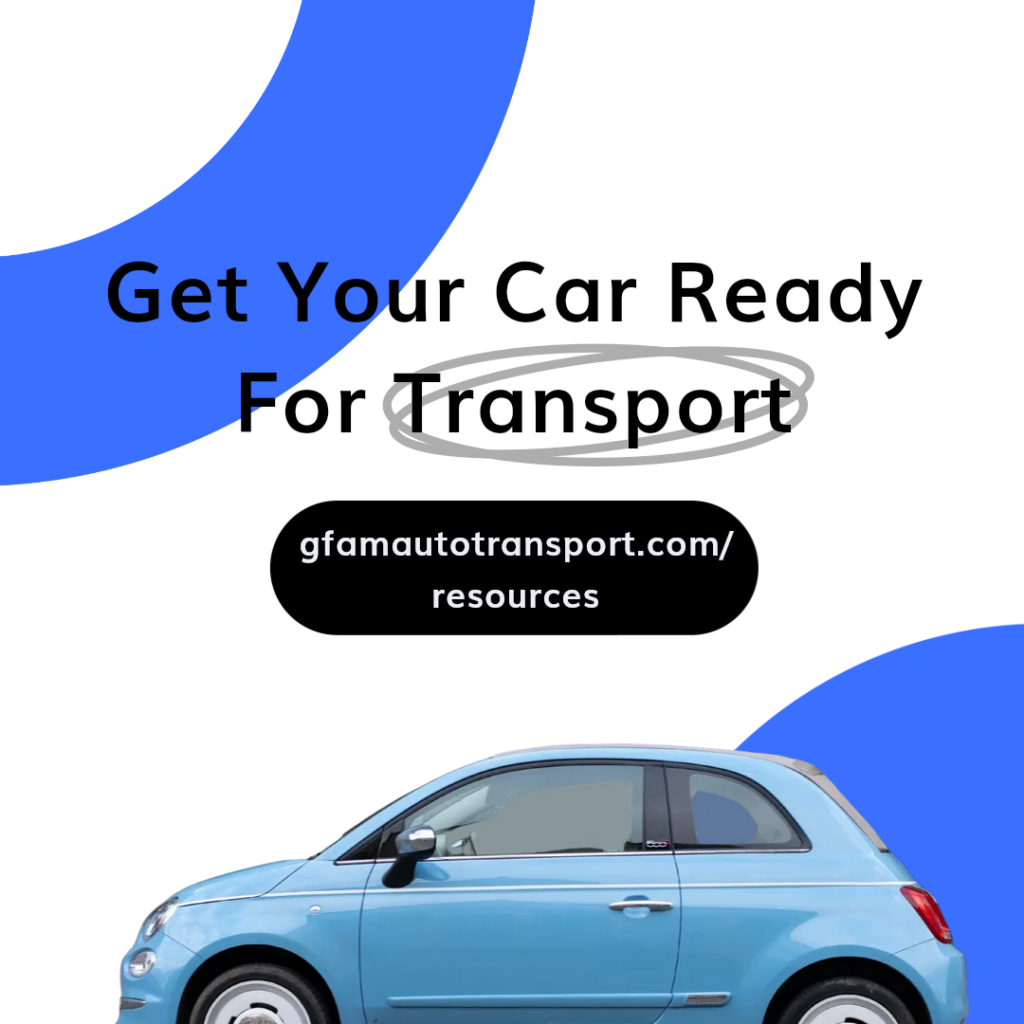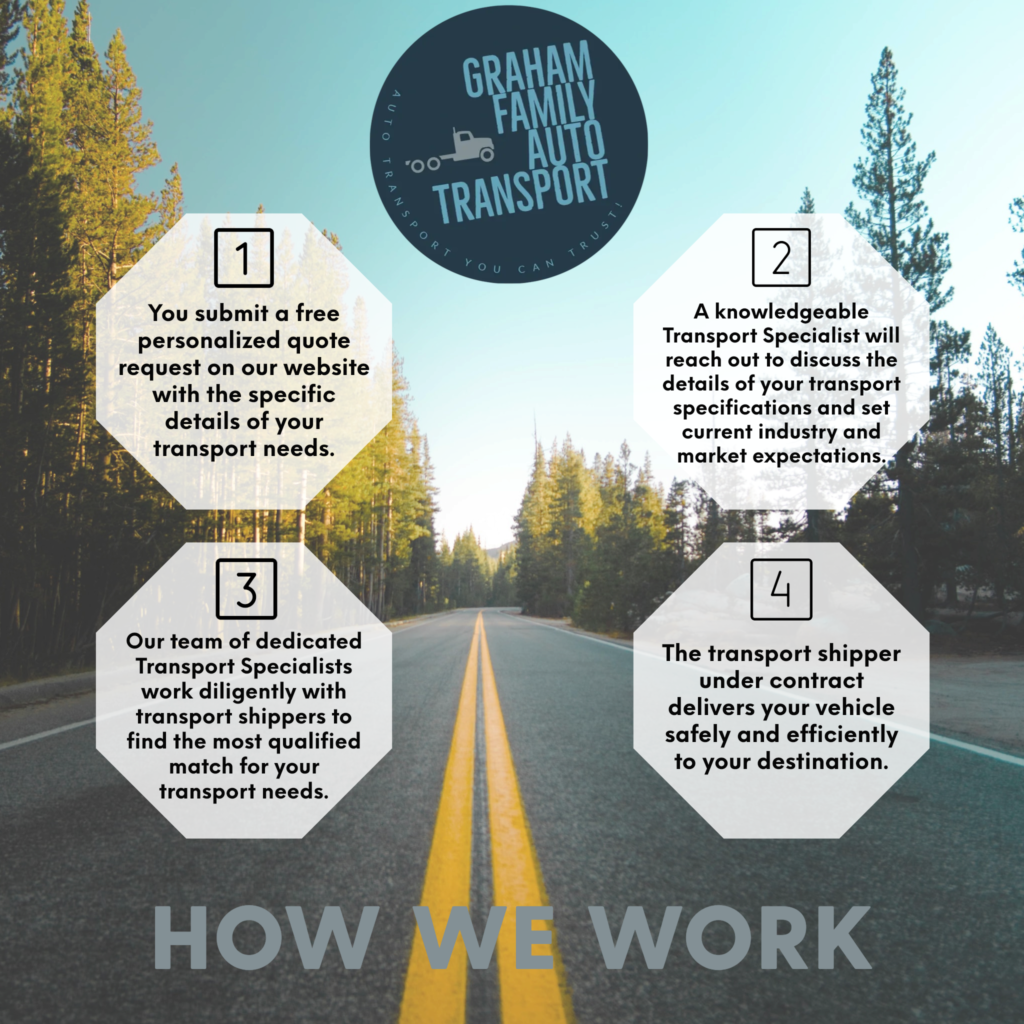How to Prepare Your Vehicle for Transport

You’ve done your homework, confirmed a transport carrier, and set a pick up date. Now it’s time to prepare your car for shipping.
A vehicle is a valuable asset and we fully understand how stressful it can be to trust someone else to move your car. While the auto transport logistics company you have chosen to work with should do most of the heavy lifting for you, the one thing they can’t do is prepare your car for shipping. In hopes of making that task a little more stress free, here are some tips on how to prepare your car for transport for both peace of mind and a smooth shipping process.
1. Wash Your Vehicle
When the transport carrier arrives to pick up your vehicle, the first thing they will do is complete a vehicle condition report with you. This report will notate and document the current condition and state of the vehicle including any damage or imperfections. By having the exterior of the vehicle freshly washed, the ability to note any existing scratches, dents, chips, dings, and other damage to the vehicle will be exponentially easier and more accurate. This will also assist with tip #2!
2. Take Pictures of Your Vehicle
Once your vehicle is clean, take photos of the exterior and interior of the entire vehicle! Make sure the photos are clear, good quality, and dated so there is no question of their accuracy and validity. You will need to ensure damaged and pristine areas of the vehicle are all included when taking photos and use different angles. Interior photos should be taken after any items are added to the vehicle that will remain during transport. There is no such thing as too many photos when documenting your vehicle. Often the drivers will also take photos of your vehicle as part of the vehicle condition report, but do not assume they will do this and don’t rely solely on their photos in the event damage occurs during transport.
Also, make sure to take photos of the odometer! It is not uncommon for us to get the question about the vehicles being driven during transport. While this is not something that I have ever heard of actually occurring aside from the driving onto and off of the trailer, it can greatly help your peace of mind to have photos of your odometer before transport.
3. Check the Interior of Your Vehicle
Transport trailers are large and cumbersome and can bounce a bit while on the road during travel. Because of this, any loose items in your vehicle can become jostled around. Remove any items that are not secured to the interior of your car like phone holders, chargers, GPS devices, portable DVD players, loose change, etc. Also, ensure any items that will be added to the vehicle for storage purposes during transport are not loose or easily moveable as they can become damaged or damage your vehicle during transport. It is highly encouraged that valuable items, fragile items, or items that collectively weigh over one hundred pounds are NOT left in the vehicle during transport. Please be advised that items in the vehicle during transport are NOT typically covered under insurance if they are damaged or lost.
4. Remove External Accessories
All removable external accessories should be removed from your vehicle prior to transport. This includes things such as bike racks, luggage racks, ski racks, custom spoilers, holiday decorations etc. This will help avoid any damage from occurring to these accessories during transport. In addition, accessories that increase the dimensions of the vehicle, such as bike racks, can prove problematic during loading and shipping and can even cause your transport to be canceled at the time of pick up if the vehicle can not fit onto the transport trailer.
5.Check the Mechanics of the Vehicle
It is not a bad idea to have a mechanic check on your vehicle prior to transport, however, if you are unable to do so make sure you have at least checked the radiator, battery, and tires of your vehicle prior to shipping. Ensure there is antifreeze in the radiator and that your battery is fully charged and secure. All tires should be properly inflated as there is the potential for damage to tires or wheels during transport if they are under-inflated or over-inflated.
Also, confirm any fluid leaks prior to shipping! Minor leaks that are unable to be fixed prior to shipping may not be a concern but significant leaks can be very problematic and even cause cancellation of your transport. Let the driver know if there is any leak so they can determine where to best place your vehicle on the trailer if there are multiple vehicles. They may intentionally load your vehicle on the bottom row of the trailer as to not drip fluid onto vehicles below.
In the event you are transporting a vehicle that is inoperable or has damaged or missing parts, be sure to discuss those things with the carrier and have them notated on the vehicle condition report. Inoperable vehicles must ALWAYS be discussed with your auto transport logistics team before confirming a shipper as the type of transport trailer required to ship an inoperable vehicle is necessary. If your vehicle becomes inoperable after booking but before pick up, it is imperative that you discuss this with your logistics team or carrier directly and immediately as to determine if reassignment to another shipper is required. Not doing so is very likely to end up with a last minute cancellation of your transport at the time of pick up. Carriers CAN NOT load an inoperable vehicle onto a transport trailer without a winch.
6. Check the Gas Tank
Your vehicle only needs enough gas to drive on and off the trailer. The lighter your car is for car transport, the better as it will save quite a bit of weight for the transporter. Ideally having 1/8 -1/4 tank of gas is preferred.
Please note, while it’s best to have a 1/4 tank of gas or less, it is not a requirement and you do not need to drain the gas if you have more than that!
7. Disable Alarms
Double check that your alarms have been disabled prior to transport. It can be quite difficult for a driver during transport when there is an alarm going off that they can’t easily get to or doesn’t know how to shut off once they can get to the vehicle.
8.Deactivate or Remove Toll Tags
Because your vehicle is on the transport trailer, the cost of tolls has been covered by the cost of your transport (unless otherwise specified by your carrier). Electronic and automatic toll readers, however, are not able to identify that the vehicle is on a carrier trailer instead of driving through and will charge your tag! Do yourself a favor and deactivate, temporarily suspend, or remove your toll tags prior to transport.
9. Have the Keys Ready
Even though your vehicle will be riding comfortably on a trailer during transport, the driver will still need the keys to drive your vehicle on and off the trailer. If you have an older model vehicle, please ensure the driver has all the vehicles keys including the door key, ignition key, glove box key, and trunk key. It is ideal for there to be two sets of keys for the vehicle – one for you and one for the driver. If you don’t already have an extra set, it is highly encouraged to have one made prior to transport.
10. Check the Vehicle’s Insurance
If your vehicle is already insured, then you’re ready to go! If not, it is highly encouraged to insure your vehicle prior to being transported. Of course your vehicle will be covered by the carrier’s cargo insurance, however, certain damage is not always covered. Damage caused by natural causes, or “Acts of God” as it is often referred, such as hail, flooding, lightning, tornadoes, etc. will not always be covered under the carrier’s cargo insurance. You can confirm with your auto insurance company to confirm that your current insurance applies to your vehicle during transport.
By following these steps, you can minimize stress, future headaches, and have peace of mind while your vehicle is being transported to it’s destination. Any additional questions you have regarding preparing for the shipping process should always be answered at any time by your auto transport logistics company or the driver.
Happy Shipping!
Graham Family Auto Transport








